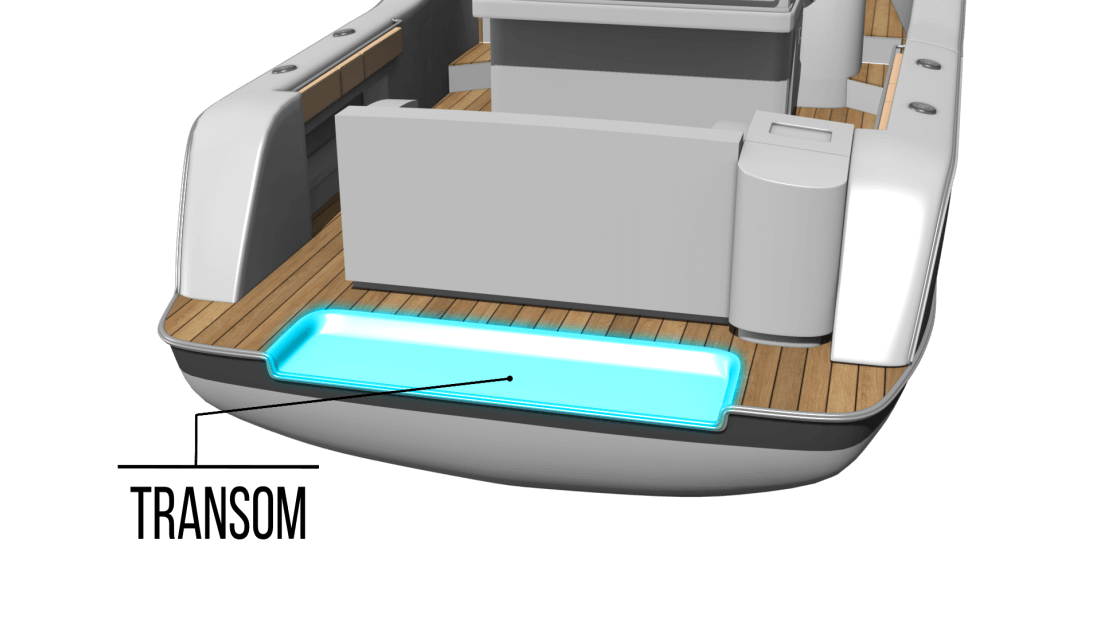What is a transom of a boat?

Understanding the Transom of a Boat
When learning about boat structure and maintenance, one parts to understand is the transom. The transom plays a role in both the strength and performance of a vessel. It’s also an area that requires regular inspection and care, especially on boats with outboard motors. Let’s look at what a transom is, what it does, where it’s located, and how to know if it’s in poor condition.
What Is a Transom of a Boat?
The transom is the flat or slightly curved vertical surface at the very back of a boat’s hull. It connects the two sides (the port and starboard) and forms the rear structural boundary of the vessel. On most modern boats, especially those with outboard motors, the transom is where the engine is mounted.
Transoms can be made from a variety of materials depending on the boat’s design. Traditional boats often used solid wood transoms, while modern boats typically use fiberglass reinforced with marine-grade plywood, composite cores, or aluminum. These materials provide strength while minimizing weight and resisting water damage.
In addition to supporting the engine, the transom is often where you’ll find the Hull Identification Number (HIN), drain plugs, swim platforms, transducers, or other mounted accessories.
What Does a Transom Do?
The transom serves several important purposes:
-
Structural Support:
The transom helps maintain the integrity of the hull by tying the sides and bottom together. It bears a significant portion of the boat’s mechanical stress, especially when the engine is running or the boat hits waves. -
Engine Mounting:
On outboard-powered boats, the transom is the mounting point for the motor. It must be strong enough to handle the engine’s thrust, vibration, and torque without flexing or cracking. -
Attachment Point:
Many components attach to or through the transom, such as trim tabs, drain plugs, ladder brackets, or towing eyes. It also supports accessories like depth sounders, transducers, and boarding ladders. -
Watertight Seal:
A sound transom prevents water intrusion into the hull. Any crack, soft spot, or loose fitting in this area can allow water to seep in and cause rot or delamination over time.
Is the Transom at the Front or Back of the Boat?
The transom is always located at the back (stern) of the boat, never the front. The front part of a boat is called the bow, while the rear is the stern. The transom forms the stern’s vertical surface and is easily visible when looking directly at the back of the vessel.
On small boats, it’s the flat section where the motor is mounted or where the name of the boat is painted. On larger vessels with inboard engines, the transom may have a built-in swim platform or transom door leading to the cockpit.
How to Tell if a Boat Transom Is Bad?
A damaged or weakened transom can compromise your boat’s safety and performance. It’s important to check it regularly for signs of wear or decay. Here are some ways to tell if your transom may need repair or replacement:
-
Soft Spots or Flexing:
Press firmly on the transom inside and outside. If it feels soft, spongy, or moves when you apply pressure, the core may be rotting or delaminating. A solid transom should feel rigid. -
Cracks or Separation:
Look for visible cracks around the motor mount or in the gelcoat. Fine “spider cracks” may be cosmetic, but deep cracks could mean structural damage. -
Water Intrusion:
Remove drain plugs and look for water seeping out of screw holes or fittings. Moisture trapped inside the transom’s core can lead to rot in wooden sections or weaken composite materials. -
Engine Alignment Issues:
If the motor seems misaligned, wobbles, or vibrates excessively, the transom may be flexing under load — a serious warning sign. -
Sound Test:
Tap the transom lightly with a plastic mallet or screwdriver handle. A solid transom will make a crisp sound, while a dull, hollow tone indicates moisture or decay inside.